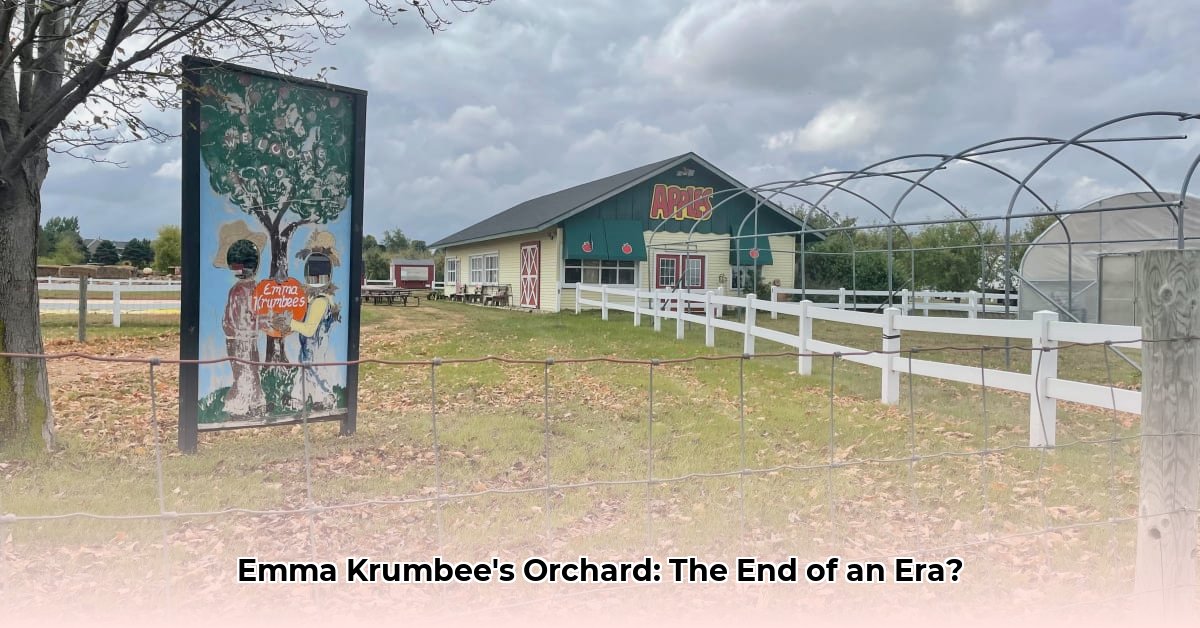
A Community's Orchard, a Community's Loss
For 43 years, Emma Krumbee's Orchard in Belle Plaine, Minnesota, was more than just an apple orchard; it was a community cornerstone. Generations of families created memories amidst its fragrant apple trees, making it a beloved local landmark. However, its recent closure marks a significant loss for Belle Plaine, prompting reflection on the challenges facing small farms and the complexities of community planning. The land, now slated for a new police headquarters, symbolizes the difficult trade-offs communities face between preserving heritage and addressing pressing needs.
The closure wasn't entirely unexpected. Small family farms increasingly struggle against rising land prices, intense competition from larger agricultural businesses, and fluctuating consumer preferences. These pressures strain small operations, often making survival challenging. The city's decision to build a new police headquarters reflects a different kind of pressure—the urgent need for improved public safety and facilities. This difficult decision highlighted a critical challenge: balancing community needs and preserving cherished local institutions.
"It was a heartbreaking decision," said Mayor Patricia Johnson of Belle Plaine. "But with our limited resources, upgrading public safety was a priority we couldn't ignore." This situation underscores the complex choices communities face when balancing long-term goals with immediate needs. How can communities best weigh such choices, ensuring everyone's voices are heard? The answer likely lies in thoughtful, inclusive community planning processes that clearly outline all associated risks and benefits.
The closure of Emma Krumbee's raises vital questions. How can we support small agricultural businesses facing economic hardship? What strategies can help communities navigate similar land-use transitions while minimizing negative impacts? These are critical questions facing many towns and cities, particularly in rural areas. The case of Belle Plaine provides valuable insights into the challenges and opportunities that emerge from such transitions.
Repurposing Farmland: A Sustainable Future for Belle Plaine?
The city's acquisition of the orchard land presents an opportunity for sustainable redevelopment. The new police headquarters could incorporate green spaces or edible landscaping, partially mitigating the environmental impact. Incorporating these design elements could maintain some link to the land's agricultural past.
"We're exploring ways to incorporate sustainable design features into the new police station," said City Planner Michael Davis. "This could include green roofs, rain gardens, and native plantings. We are also examining possibilities for community-supported agriculture (CSA) initiatives on other suitable lands in the area."
This approach demonstrates a proactive attempt to balance community needs with sustainable practices. Could Belle Plaine's experience serve as a model for other communities facing similar land-use decisions? The steps taken will influence how others approach these complex situations. By thoughtfully integrating sustainable practices, the city can turn this transition into an opportunity for community-building and sustainable growth.
A Case Study in Community Planning Challenges
The orchard’s closure showcases the vulnerability of small farms and the tension between tradition and modern necessities. However, the story is not solely about loss; it's also a story of adaptation and opportunity. By learning from this experience, Belle Plaine can build a stronger, more sustainable community. Key lessons learned include the importance of:
- Comprehensive Community Engagement: Transparent communication and broad community involvement are essential in navigating land-use changes.
- Sustainable Development Practices: Integrating environmental considerations into development plans minimizes negative impacts and promotes long-term sustainability.
- Economic Diversification: Supporting local businesses and exploring new economic opportunities can help communities become more resilient to change.
The story of Emma Krumbee's Orchard serves as a powerful case study, illustrating the inherent challenges and opportunities presented by balancing community needs with environmental concerns. Its closure inspires critical reflection on how we can better support small-scale agriculture and navigate land-use transitions thoughtfully and sustainably. By understanding and addressing the issues highlighted by this case, communities can prevent similar losses and create more sustainable futures.
Key Takeaways:
- The closure of Emma Krumbee’s Orchard highlighted the challenges facing small-scale agriculture and the importance of community planning.
- Repurposing farmland for community infrastructure requires a balance between community needs and environmental sustainability.
- Belle Plaine's experience provides valuable insights into the complexities of land-use transitions and the potential for sustainable redevelopment.